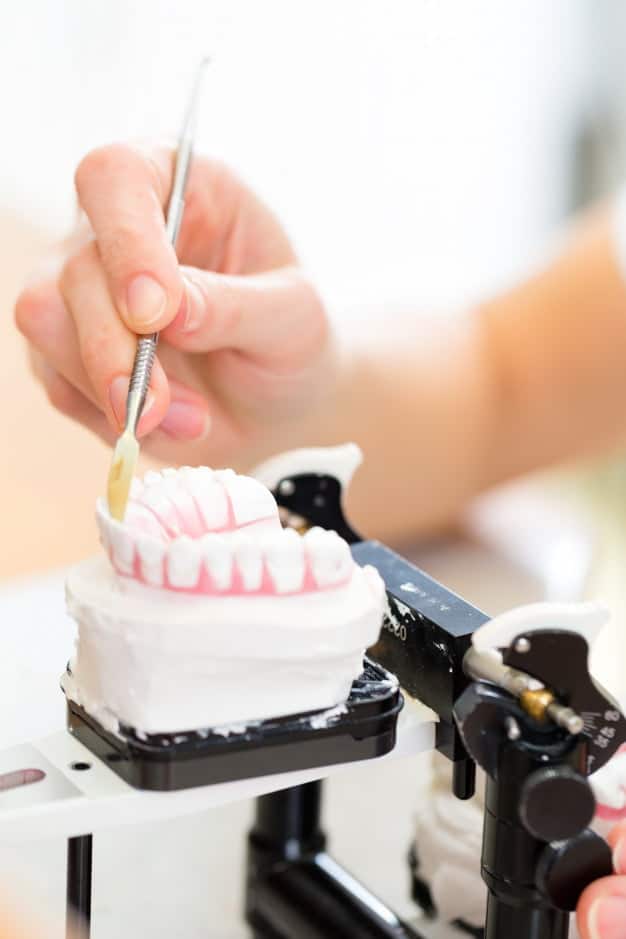Dental prosthesis are artificial structures that are used to restore the anatomy and aesthetics of one or more dental pieces, to ensure that the patient recovers functionality, security and smiles without problems.
They are manufactured in a personalized way (according to the needs of each person) with materials such as acrylic or porcelain. The base of a dental prosthesis must imitate the natural tissue of the maxillary bones, with careful treatments such as polymethylmethacrylate pigmentation, which prevents the accumulation of bacteria.
Dental prostheses goals
The main function of dental prosthesis is to rehabilitate the oral cavity in its physiological functions, improving the chewing and swallowing of food, as well as avoiding pronunciation problems. Recovering dental aesthetics and providing security is another reason why this treatment is carried out.
Types of dental prostheses
Currently there are varieties of dental prostheses: from the one that are complete, replacing all teeth, to partial ones, if they only replace some parts. Also, there are the fixed prostheses, which cannot be removed by the patient, among them are:
Crowns or fixed bridges
They are used to restore one or more teeth. They are placed on the previously sanded teeth and adapted to the prosthesis, being their only support. They are usually made of metal-ceramic or zirconium.
Fixed on implants
These structures usually consist of a base fixed by screws that have been placed inside the maxillary bones. It’s used to recover the functionality and aesthetics of the entire oral cavity.
Hybrid prostheses
They are advised in patients with considerable bone loss. They are generally constructed with acrylic materials and to sanitize them, the patient must attend the dental consultation.
Removable prostheses
As its name implies, they are those that can be extracted by the patient himself. They are the most commercial and chosen by patients not suitable for the placement of fixed prostheses, since they don’t have the appropriate conditions for it. These types of dental structures are usually made from a system that makes them more resistant.
Care of dental prostheses
The dental professional will give severe instructions on the maintenance of dental prostheses. It should be noted that in order to increase the durability of dental prostheses, it’s necessary to carry out daily care and go to the dental examination periodically (at least every 6 months).
At the same time, to clean and keep removable prostheses free of bacteria, it’s necessary to wash not only the prosthesis but the entire oral cavity after each meal or snack, by brushing and flossing. The prosthesis must be sanitized with the help of materials suitable for cleaning said material.
Also, to comply with the cleaning of fixed dental prostheses, it’s carried out on the accessible parts, with a toothbrush and fluoride-based toothpaste. The oral cavity must be kept sanitized regardless of the special care for dental prostheses.


